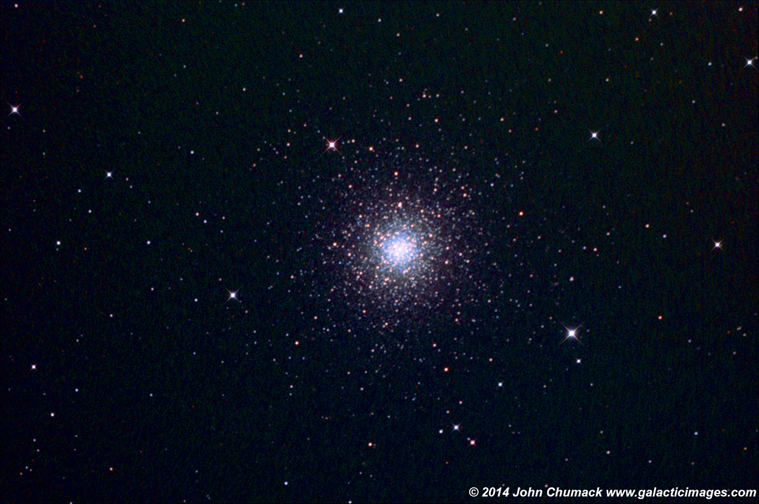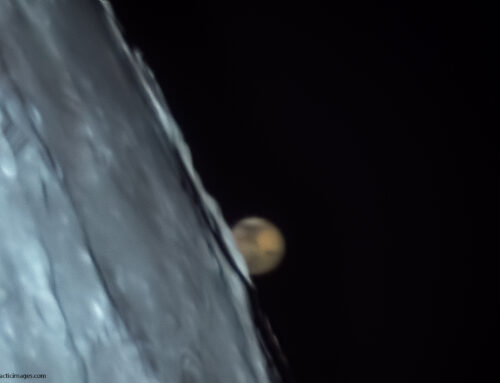M3_Globular Star Cluster captured during some testing last Friday night with my Homemade 16″ Diameter telescope & QHY8 CCD Camera & 1 hour exposure at my observatories at John Bryan State Park Observatory in Yellow Springs, Ohio. 05-30-2014
M3 is the 3rd Object in Charles Messier’s Famous 110 object Catalog of amazing deep space Galaxies, Nebulae, & Stars Clusters. It was Charles first “Original” Discovery which occurred on May 3rd 1764.
M3 was first resolved into stars and recognized as cluster by Sir William Herschel around 1784.
At a distance of about 33,900 light years, M3 is further away than the center of our Galaxy, the Milky Way, but still shines at magnitude 6.2, as its absolute magnitude is about -8.93, corresponding to a luminosity of about 300,000 times that of our sun.
M3 is thus visible to the naked eye under very good conditions – and a superb object with the slightest optical aid. Its apparent diameter of 18.0 arc minutes corresponds to a linear extension of about 180 light years; an estimate of even 20 arc minutes from deep photographic plates, corresponding to about 200 light years linear diameter. It appears somewhat smaller in amateur instruments, perhaps about 10 minutes of arc. But its tidal radius, beyond which member stars would be torn away by the tidal gravitational force of the Milky Way Galaxy, is even larger: About 38.19 minutes of arc. Thus, this cluster gravitationally dominates a spherical volume 760 light years in diameter.
On the other hand, M3 has a compressed, dense core measuring 1.1′ in diameter, or linearly, 11 light years, comparatively large for a globular. Its half-mass radius is 1.12′, or about 11.2 light years, so that half of this clusters mass is contained in a volume of only 22 light years in diameter.
Imagine being on a Planet around a Star in the center of this Cluster, your entire night sky would be covered with super bright stars!!!
Learn more about M3 from http://messier.seds.org/m/m003.html
Best Regards,
John Chumack
www.galacticimages.com







